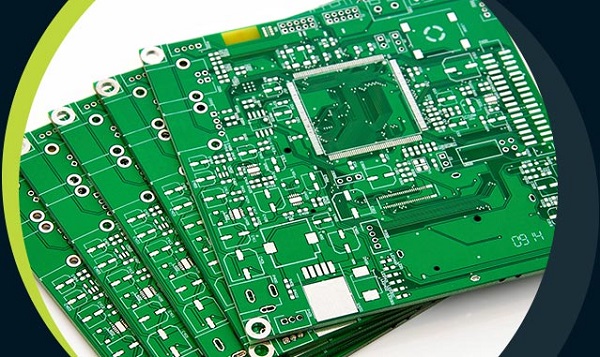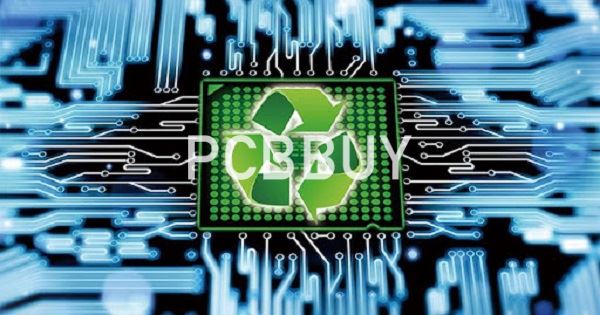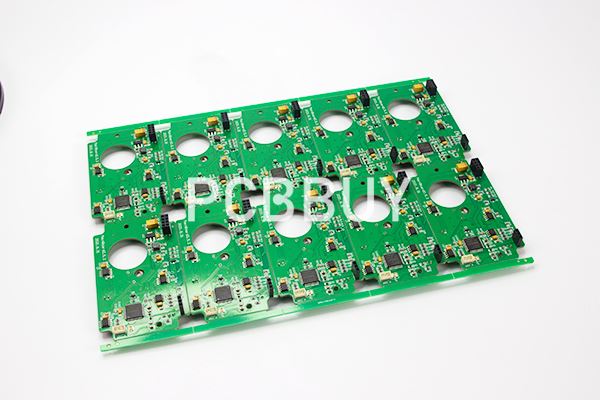How to Recycle PCB Boards with 5 Effective Tips?
By:PCBBUY 09/30/2021 10:34

PCB, the integral part of any electronic products, accounts for a great percentage of the total weight among those typical components dismantled from the e-waste. On one hand, waste PCBs contains heavy metal elements, organic matters and chemical residuals that may cause a serious threat to the environment as well as human health. On the other hand, waste PCBs has great residual value due to the presence of high-grade precious metals such as Au, Ag, Cu, Pd, Ta and so on.
In addition, the metallic grade in PCBs is more than a hundred times of that in natural mineral resources. Therefore, recycling waste PCBs plays a critical role in both environmental protection and economic development. In this passage, read the content and learn more knowledge about PCB recycling.

What are the 5 tips to recycle PCB?
1. What can we recycle from PCB?
Some of the valuable materials that can be recovered from printed circuit board waste include:
· Copper from the edge trim
· Copper oxide from treatment sludge
· Copper from the etching solution
· Copper hydroxide from the plated through holes process
· Copper from the rack stripping process
· Copper from the solder stripping process
· Tin from the hot air leveling process
2. How to reuse PCB?
Pulling parts off PCBs and recycling the components for use again as functional parts is not practical or economical. The parts are easy to damage and they would need retesting to ensure they still worked. Such parts would be of poor quality and the labour costs of recycling would be huge compared with bulk produced new parts. Most parts now need to be taped and reeled. Trying to re-tape and reel parts pulled off old circuit boards is completely impractical because of the cost.
Direct recycling of scrap unpopulated PCBs themselves into other products is possible, but this only occurs on a very small scale. The process is laborious and the finished products are problematic. In order to reuse scrap PCB and make a beer mat for instance, suitable source material has to be hand sorted and rough cut to a standard shape. Blanks must be drilled and pinned for CNC routing. After routing, edges must be de-burred since where the router cuts through a hole since a razor sharp metal shard may be left. The safety and look and feel of such finished products is dubious.
3. What is the process of PCB recycling?
PCBs can be recycled in three different ways, all of them with their pros and cons.
Thermal Recovering
The thermal recovering process heats up the PCB at a very high temperature with the idea of only recovering the metals present on the board (the FR-4 gets incinerated). This method can be easily implemented but produces deleterious gases such as dioxin and lead fume.
Chemical Recovering
The thermal recovering process involves putting the PCB in a bed of acid. The output recovers the metals but carbonizes (destroys) the FR-4 component. It also produces a high amount of wastewater which must be treated before sending it back to the environment.
Physical Recovering
Physical recovering is achieved by shredding and smashing the PCBs and then separating the metals from the non-metals. This process has no direct environmental impact but it is hazardous for the operators as the machinery is extremely loud, dust particles with heavy metals and glass fibre float in the factory which can cause respiratory diseases and an irritant odour is present because of the rise of temperature when the PCB is smashed and shred.

4. What are different methods of PCB recycling?
At the beginning of PCB manufacturing processes, carbothermic reactions pair chemical reactions with high temperatures to reduce iron impurities for removal from tin/lead solder dross—or the waste from wave soldering. In addition, co-combustion and gasification processes convert organic materials into carbon monoxide and hydrogen gases by combining high temperatures with oxygen and steam to produce electrical power. After cutting and sorting PCB boards, most firms rely on pyrometallurgy, hydrometallurgy, or electrochemical processes to break down the boards and retrieve precious materials.
5. Is it the PCB recycling friendly to environment?
The intention behind all PCB recycling processes is to not cause additional harm to the environment. While extreme heat changes metals both chemically and physically, the process also uses energy, and can release toxic dust and gas containing dioxin and lead.
Aside from using energy, pyrometallurgy also requires increased investment costs. Some of those costs cover the equipment needed to recycle metals. Other costs cover waste air processing that prevents hazardous dust and particulates from entering the air.
Although pyrometallurgy involves the use of high-tech methods, the process has taken an ugly turn. Instead, workers use open fires to burn non-metal waste materials while attempting to retrieve precious metals. Unless used correctly, hydrometallurgy can also be harmful to the environment. Without the proper wastewater treatment equipment, wastewater can contain acids and metallic ions.
Industry Category











